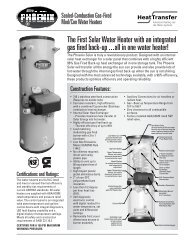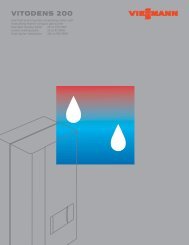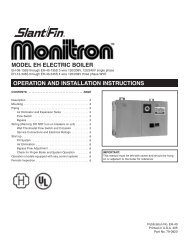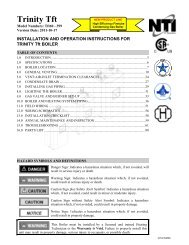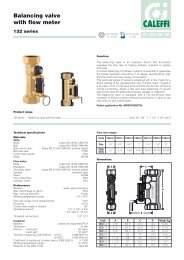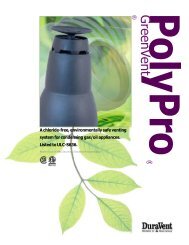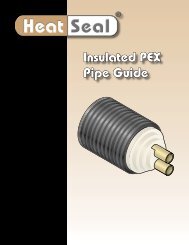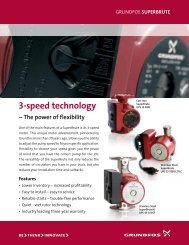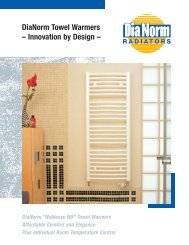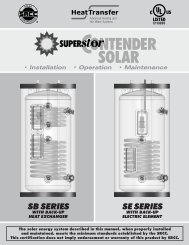Apricus Solar Water Heating System Installation and Operation ...
Apricus Solar Water Heating System Installation and Operation ...
Apricus Solar Water Heating System Installation and Operation ...
Create successful ePaper yourself
Turn your PDF publications into a flip-book with our unique Google optimized e-Paper software.
<strong>Apricus</strong> <strong>Solar</strong> Collector <strong>Installation</strong> & <strong>Operation</strong> Manual - USApotable water, but because the pressure is independent of the water main pressure, fluctuations in pressurewill not occur.Refer also to 3.6.2 for more information about pressure <strong>and</strong> water boiling.3.5. Pump Selectiona) Pump Size: For most domestic installations, using a 3-speed pump is advisable in order to chose aspeed to suit the pressure drop of the piping. Speed 1 is generally suitable for a short pipe run, such as on asingle story house. Speed 3 (~90-100Watts) can normally service a 3 story, 90 tube, pressurized system(not necessarily a drain-back). If the pipe run is very long or there are more than 90 tubes, a larger pumpmay be needed. The <strong>Apricus</strong> Closed Loop Pump Station uses a 3-speed Grundfos UPS 15-58 FC cast ironbody pump <strong>and</strong> the <strong>Apricus</strong> Direct Flow Pump Station has a single-speed Grundfos UP 15-29 SFC stainlesssteel body pump.If multiple banks of collectors are installed in parallel, the head loss should be calculated based on thelongest pipe run through a single bank of collectors <strong>and</strong> then, the pump can be sized to meet the total flowrate requirements.b) Pump Body Material: Cast iron pumps may ONLY be used for closed loop or systems; they will rust <strong>and</strong>fail if used with potable water. Brass/bronze or stainless steel body pumps are suitable for direct flowsystems because the material has good corrosion resistance <strong>and</strong> is suitable for potable water use.c) Pressure Drop Curve: The <strong>Apricus</strong> 30 tube solar collector header has the following pressure drop curve.The pressure curve will be slightly less for <strong>Apricus</strong> 10 <strong>and</strong> 20 tube collectors.d) Use a Flow Meter: Always install a flow meter after the pump to ensure that flow rates are at suitablelevels <strong>and</strong> can be monitored. Most flow meters will incorporate a restrictor valve allowing the flow to be set.If significant restriction is required, a slower speed or smaller pump can be used, which will save electricity.e) Variable Speed vs ON/OFF: The most efficient option is to use a controller with a variable speed pumpfunction that can regulate the pump speed to achieve the desired temperature rise (delta-t). With a normalON/OFF delta-t setting, “shunting” of water can occur. Shunting is when the pump shuts down before all ofthe heated fluid can reach the tank. The hot fluid sits in the return line <strong>and</strong> looses heat until the next ONcycle, before it finally is delivered back to the tank. This is especially true when high flow rates are used<strong>and</strong> when there is a long pipe run. A variable speed control helps to prevent this from happening bysending the heat back into the tank as it is produced <strong>and</strong> results in higher overall system efficiency <strong>and</strong> heatoutput.f) Direct Flow - Flow Rate: A high flow rate in a direct flow system may cause turbulence in the solarCopyright 2011 – <strong>Apricus</strong> Inc Doc: A7-05.4.1.4-PB-1.9 Page 20 of 126



